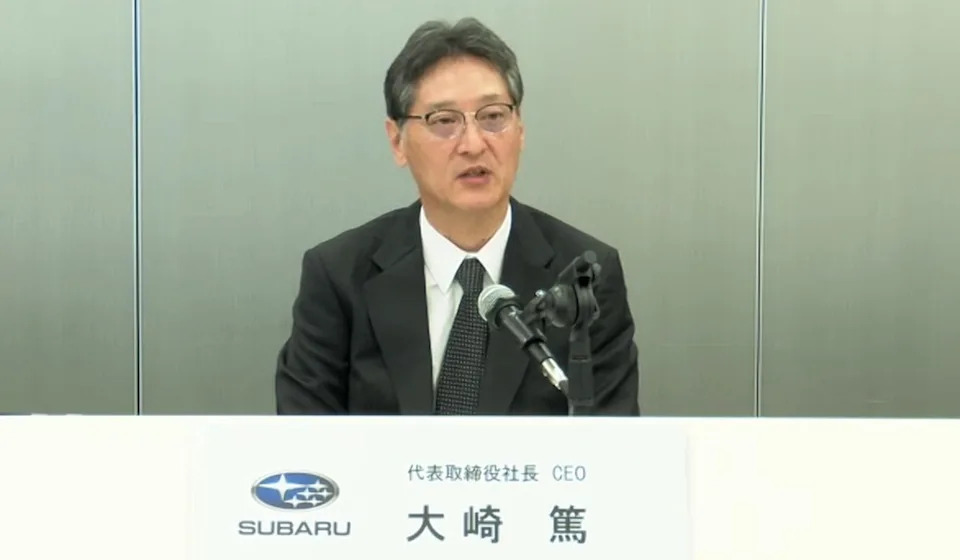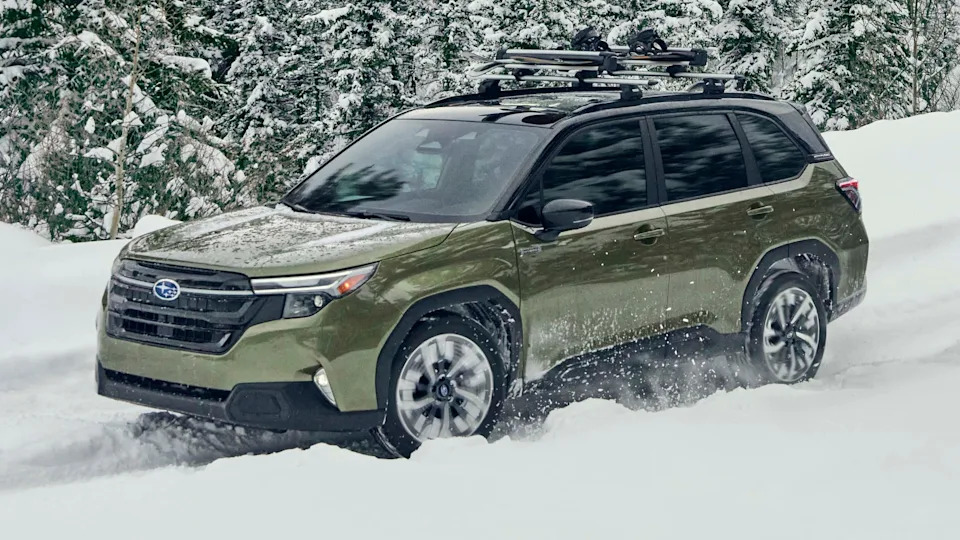News
Subaru rethinks electrification, braces for $2.5 billion tariff impact

Import-reliant Subaru will rethink its electrification strategy , including the timing of investments, amid new global trade tumult and uncertainty about future emissions regulations.
CEO Atsushi Osaki said the overall direction toward electrified vehicles remains unchanged.
But the pace of Subaru’s rollout and the amount of money it plows into the technology is under review as the company braces for sliding sales and withholds earnings guidance.
“We are re-evaluating our plans, including the timing of investments, in light of not only today’s rapidly changing environment but also medium- to long-term external business factors surrounding our company,” Osaki said May 14 while announcing fiscal year financial results.
The move comes as Subaru dives deeper into hybrids with a gasoline-electric version of its popular Forester crossover for the U.S. and after the unveiling of a new Trailseeker full EV .
Sign up for the Automotive News Cars & Concepts newsletter, a weekly roundup of new and future product, design and auto show news.
Executives said the Trump administration’s tariffs could cost Subaru Corp. some $2.5 billion in the current fiscal year if the company doesn’t take any actions to mitigate the impact.
Subaru, which relies on imports from Japan for about half of its sales in the crucial U.S. market, said it could not give a full forecast for the current fiscal year ending March 31, 2026.
It joined fellow Japanese carmakers Honda, Nissan and Mazda in refraining from an outlook.
Subaru is now considering ways to ramp up output of U.S.-made vehicles.
Its sole U.S. factory, in Indiana, churned out 345,000 vehicles in the just-ended fiscal year. In the extreme, it could be cranked up as high as 500,000 vehicles, Senior Managing Executive Officer Tomoaki Emori said. But the current supplier base is geared for around 370,000, he said.
“We still have the production capacity, so we would like to mitigate the impact of tariffs while making use of it,” Emori said. “Under the current circumstances, there is probably no way not to expand in the U.S. We must think about how to go about that.”
Subaru’s annual profit falls as it predicts sales will continue to decline
Osaki said Subaru wants operating profit of at least ¥100 billion ($667.7 million) for the current fiscal year. That goal is just a quarter of what Subaru earned in the fiscal year ended March 31, 2025.
“Even if the impact of U.S. tariff policy continues throughout the fiscal year, we will implement various measures and are aiming for operating profit at the ¥100 billion level as an initial target,” Osaki said. “At the same time, we will strive to further enhance profitability by continuing to improve productivity and create new revenue opportunities.”
Subaru will flesh out a forecast as soon as it has better clarity, Osaki said.
Osaki’s assessment came as Subaru announced a 13 percent decline in operating profit to $2.7 billion in the company’s fiscal year ended March 31.
Rising incentives in the U.S., combined with falling sales volume, drove the profit decline.
Revenue dipped 0.4 percent to $31.3 billion), while global sales retreated 4.1 percent to 936,000 vehicles in the 12 months. Total vehicle deliveries in North America, Subaru’s biggest and most important market, declined 4.1 percent to 732,000 vehicles.
Canada volume added 2,000 vehicles to a record 70,000. Deliveries in Europe fell 17 percent to 23,000. Sales in Japan advanced 5.4 percent to 104,000.

Looking ahead to the current fiscal year ending March 31, 2026, Subaru withheld financial forecasts citing the uncertainty in the global trade environment and U.S. tariff policies.
But the company expects sales to post another year of declines.
Subaru now sees global volume declining 4 percent to 900,000 vehicles. Sales will be dented partly by interrupted output at the company’s Yajima plant in Japan, which is being retooled to prepare for in-house production of next-generation EVs.
Subaru declined to give a regional breakdown for its sales outlook.
How Subaru’s planning for EVs is getting complicated
The trajectory for battery electric vehicle growth is getting fuzzy, Osaki said.
“We are currently making various preparations for a BEV-dedicated plant, but I feel that we may have to review what type of vehicles to produce at that plant, such as mixed production with gasoline products, depending on the situation,” he said.
At last month’s New York auto show, Subaru said it would introduce a second EV to its U.S. lineup next year with the 2026 Trailseeker, an Outback-sized two-row crossover that the Japanese automaker is expected to make at its domestic production hub north of Tokyo.
Subaru has said it wants to electrify all its vehicles — with either standard or plug-in hybrid setups or full battery-electric systems — in the first half of the 2030s.
But U.S. regulatory change is also factoring into Subaru’s rethink of that approach.
This week, Republicans in the U.S. House of Representatives proposed eliminating the tax credit incentive for EVs and rolling back aggressive fuel economy rules meant to stoke EV sales.
“It is becoming more difficult to decide how to incorporate electrification into our production mix,” Emori said. “While the shift to electrification and EVs is slowing down, EVs are the main scheme for dealing with global warming. We will consider the production lineup while thinking about how to incorporate hybrids and plug-in hybrids.”
Send us a letter to the editor
Have an opinion about this story? Tell us about it and we may publish it in print.

